Continuing the ongoing saga of just what is under the Martian south polar ice caps, new research has once again analyzed radar data, and this time, scientists find that clays known as smectites are responsible for the bright reflections once thought to be subsurface lakes. Plus, drama with an ISS docking and some more oddball exoplanets to round out the week.
Podcast
Transcript
Hello and welcome to the Daily Space. I am your host Beth Johnson, and I am here to put science in your brain.
Remember 2020? It was the longest decade of our lives. I know we all think it was the Year of the Pandemic, but who remembers the bushfires in Australia that kicked off this nightmare of a year?
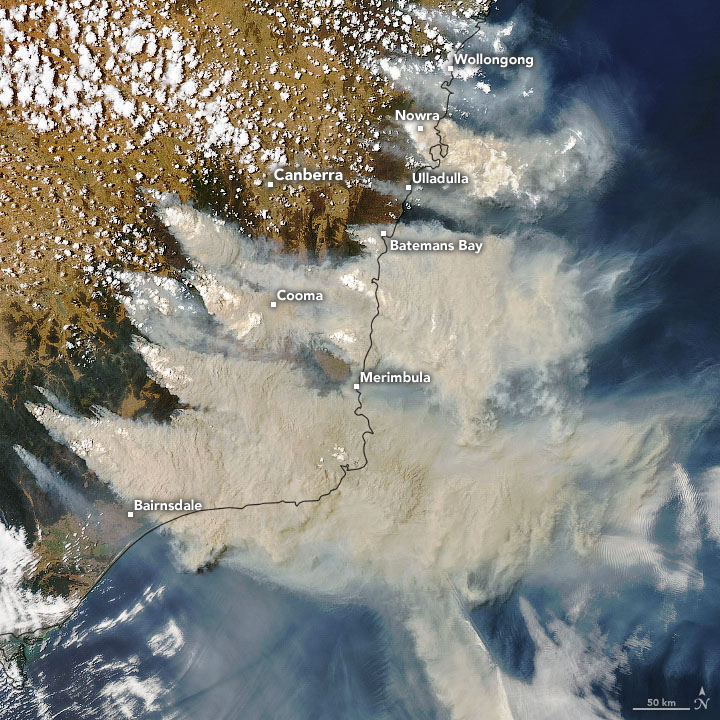
It turns out that those bushfires actually had a larger impact on the global climate than the pandemic lockdowns. Yes, we all stayed home and commuted less, decreasing emissions and clearing up the air around many cities around the world. However, in a new study published in Geophysical Research Letters, scientists analyzed how the climate changed over the year, and they found that while the lockdowns did have a slight warming effect due to a decrease in air pollution and an increase in sunshine reaching the Earth’s surface, that was all offset by the effects of the bushfires. Per the press release: …the Australian bushfires cooled the Southern Hemisphere to such an extent that they lowered Earth’s average surface temperatures. This is because sulfates and other smoke particles interact with clouds to make their droplets smaller and reflect more incoming solar radiation back to space, reducing the absorption of sunlight at the surface.
The smoke from the fires made it up to the stratosphere and circled the Southern Hemisphere. Now, the difference between the lockdown and the fires is only 0.01 degrees Celsius, which doesn’t sound like much, but consider how long the pandemic lockdown has lasted and how brief the fires were by comparison. Wildfires are a problem that is only going to get worse as more extreme weather creates drought conditions in various parts of the world. And before anyone says “but it was a net cooling effect” remember that it was cooler in one hemisphere than the other, and that moved tropical storms farther north than usual. Please, please don’t go set the world on fire to combat climate change, folks.
Another way people like to talk about combating climate change naturally is to hope for a good volcanic eruption that drops the global temperature as happened in 1816. I mean, sure, that could work, but it’s not predictable or something we can cause. And please, please don’t set off nukes to awaken a volcano. That doesn’t work either except in disaster movies full of bad science. Great for popcorn; not great for reality. And meanwhile, scientists are studying really neat ways to understand volcanic eruptions.
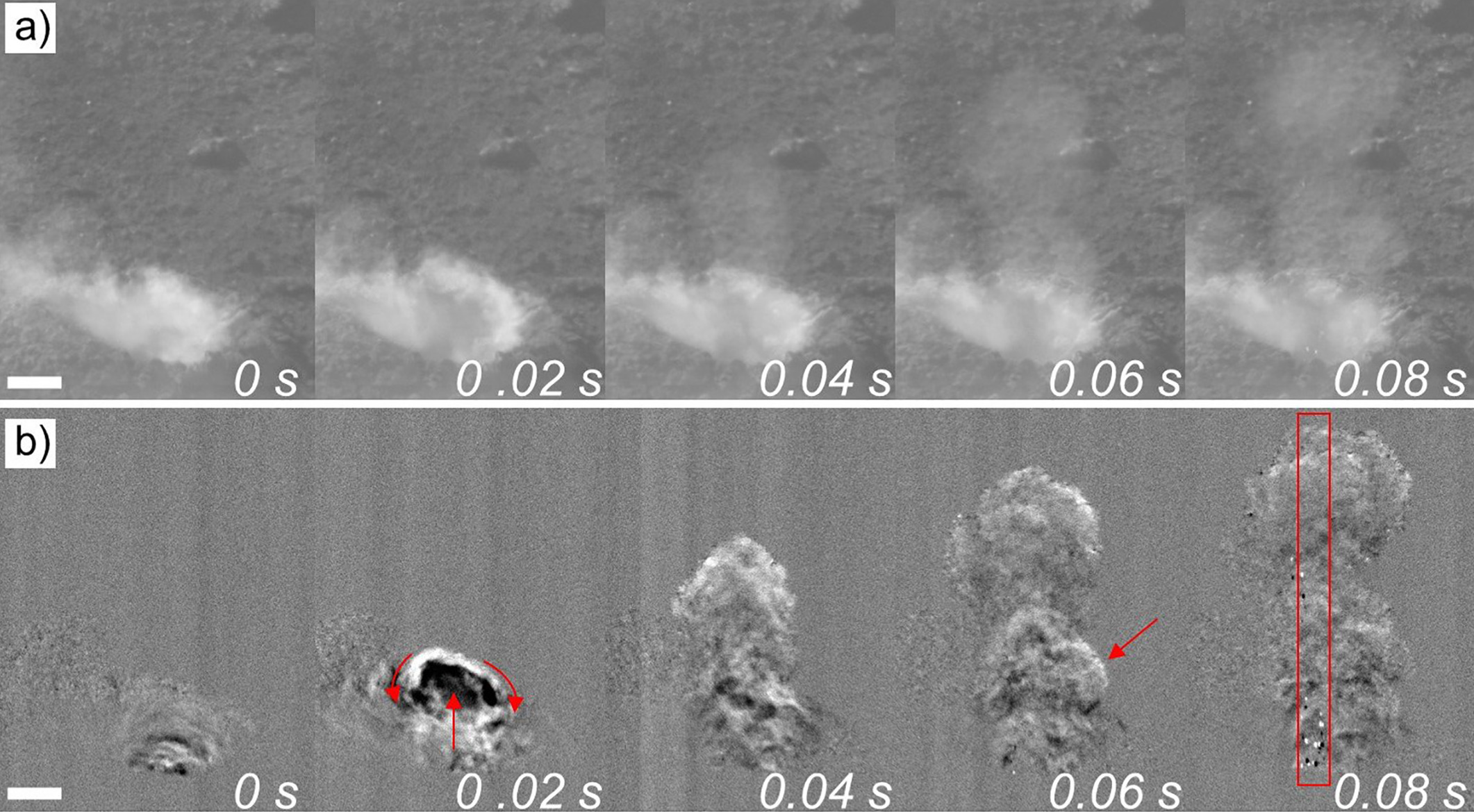
Another new study in Geophysical Research Letters has a team of scientists trying to figure out how to listen to volcanic vortex rings so they can monitor eruptions they cannot see, such as at night or when there is too much smoke.
What’s a vortex ring? These are curls that form in an eruption plume almost immediately after an eruption. Think of them like the ripples left in the water as an oar is pulled through. Their size, speed, and composition can help tell us how hazardous the eruption is and even how deep down the eruption started. Per the release: ...a team of volcanologists and jet-stream physicists paired high-speed video with audio focused on the first seconds of eruptions at Stromboli volcano in Italy to listen to the vortex rings.
And lead author Jacopo Taddeucci further explains: There is a characteristic sound which is made by the vortex itself, which is a low, constant sound. The beauty of the vortex rings is that they are stable, and that means that they make a constant sound that is propagating over time.
Now, I’ve worked with people who have used sound to track underwater eruptions, but this is the first time I’ve heard of understanding subaerial eruptions using sound. What an interesting avenue of research.
Another interesting avenue of research for me is when someone reviews older results that were either wrong or just not sufficiently right. This story starts in the 1840s when two German mineralogists, Rudolf Hermann and August Breithaupt published separate papers positing the existence of an iron-poor version on hematite that contained water. The name that has stuck for this proposed mineral was hydrohematite, which makes perfect sense. However, in the 1920s, scientists using this new fangled X-ray diffraction technique said those papers were wrong.
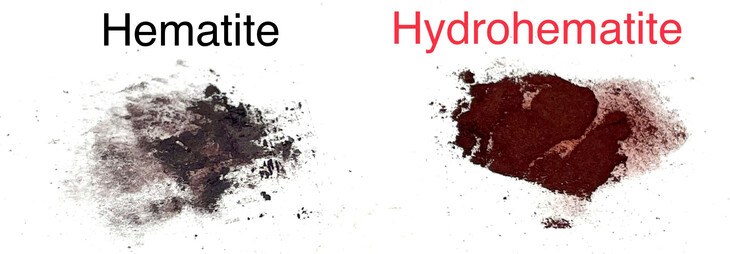
Enter graduate student Si Athena Chen, who set out to crystalize hematite and ended up with an iron-poor version. This led her to seek out old samples that supposedly contained water and test them, including Breithaupt’s original sample. Technology has come a long way since the 1920s, and X-ray diffraction has drastically improved. Plus, Chen had at her disposal other advanced instruments. And what she found was that the samples were indeed iron-poor and had hydroxyl, OH, substituting some of the missing iron. Voila! Hydrohematite.
Who cares? Scientists studying Mars have found bright red pebbles on Mars that are now called “blueberries” and are thought to be hematite. Chen’s experiments found that hydrohematite formed at temps lower than 150 degrees Celsius, from watery, alkaline environments, similar to what we think Mars had available in its watery past. The mineral forms in spherical structures here on Earth, so it’s possible that the blueberries are the same. Now we just need more data from Mars. The rovers have X-ray diffraction instruments, but they aren’t sensitive enough to tell the difference between hematite and hydrohematite, so definitive answers may have to wait until the Mars Sample Return mission happens.
Wednesday’s Rocket Roundup was a little light on the rockets. There were no launches. Next week is looking better, but we have one story we didn’t want to postpone until then. It’s not a rocket launch, it is, however, launch-related.
Back on July 21, Russia finally launched their Nauka Multipurpose Laboratory Module to the International Space Station (ISS), and the docking was scheduled for July 29. There was an incident after docking the module to the space station. But let’s start with the rendezvous and docking itself, which were also eventful.
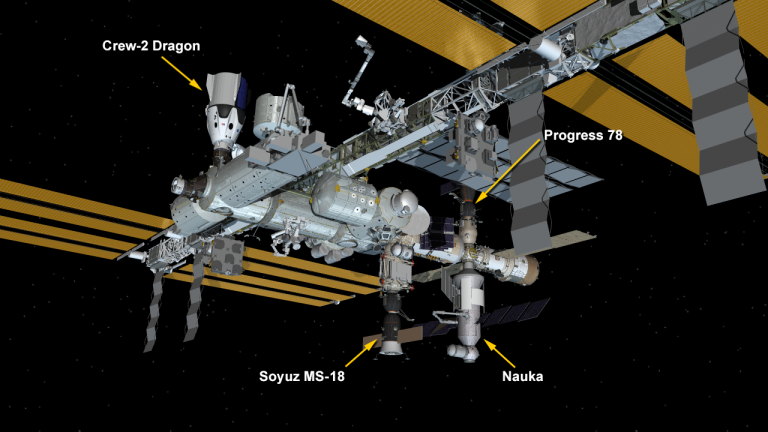
Nauka’s propulsion system malfunctioned almost immediately after launch, with the main engines unable to burn for several days as the fuel tank pressures were accidentally mixed. The main engines could not be fired until the pressure dropped to a lower level. The initial burns to raise the module’s orbit for the rendezvous were performed instead by the smaller reaction control thrusters. The main engines finally became operational on July 25 and operated correctly in their planned burns.
The docking itself was sporty as well. The module briefly stopped responding to commands to slow down, and in the last few moments, the ISS crew nearly took over manual control of the docking. That turned out to be unnecessary, and the module completed docking and hard capture in automatic mode. Then the real fun began…
The Nauka module appears to have thought it was still trying to dock after hard capture and fired its thrusters while docked to the ISS at around 16:45 UTC. This caused it to move the entire 440-ton station 45 degrees out of attitude. A leak of some kind was also occurring from the module, as evidenced by clouds of particles observed coming from it.
Luckily, Nauka ran out of propellant, and the thrusters stopped firing. The thrusters were also inhibited from the ground by Russian mission control.
The ISS was out of attitude control for about 45 minutes, and the space station’s correct attitude was recovered with thruster firings from the Zvezda Service Module and Progress MS-17. The Control Moment Gyroscopes, three spinning masses, one for each axis on the ISS’s truss, are normally used to move the station around without the use of thrusters. They were not up to the task so control of the ISS’s attitude was handed over to the thrusters on Zvezda and Progress.
At no point were any ISS crew in danger according to NASA’s Public Affairs Office, but if the situation had gotten worse, they would have evacuated the station. Both the Soyuz MS-18 and the Crew Dragon were powered up and could have departed the station in minutes even with the station moving around due to the loss of attitude control.
The ISS was also out of communication with the ground for a total of eleven minutes because the changed orientation meant the Ku band dish was out of alignment with the TDRS satellites in geostationary orbit.
The Nauka module will also safe its propellant system by firing pyro valves to explosively separate the contaminated and now redundant propellant tanks from the thrusters to prevent further accidental thruster firings. This part, at least, was pre-planned as the module will not be used to help control the ISS’ attitude. Also, it’s now a simpler plan due to the inadvertent thruster firing which used up most of the remaining propellant.
After the tanks are separated, they will be purged with nitrogen. This configuration will still allow a docked Progress vehicle to transfer propellant through the Nauka module to refuel the tanks and engines on the Zvezda module which is used for both orbit raising and station attitude control.
But wait, there’s more! This entire incident had the effect of delaying the planned launch of Boeing’s Starliner spacecraft, originally planned for later today, to the next available opportunity on August 3 at 17:20 UTC. The ISS program directors want some time to fully inspect the station for damage.
All in all, it was a wild and woolly ride. We’re glad that the crew and station are safe, and we hope it stays that way.
Back to water on Mars. A few weeks ago, we brought you the story that bright radar reflections from under Mars’ south polar ice caps were probably not water but more likely salty ice or some other conductive mineral. We even interviewed the Planetary Science Institute’s Than Putzig, who was an author on that paper.
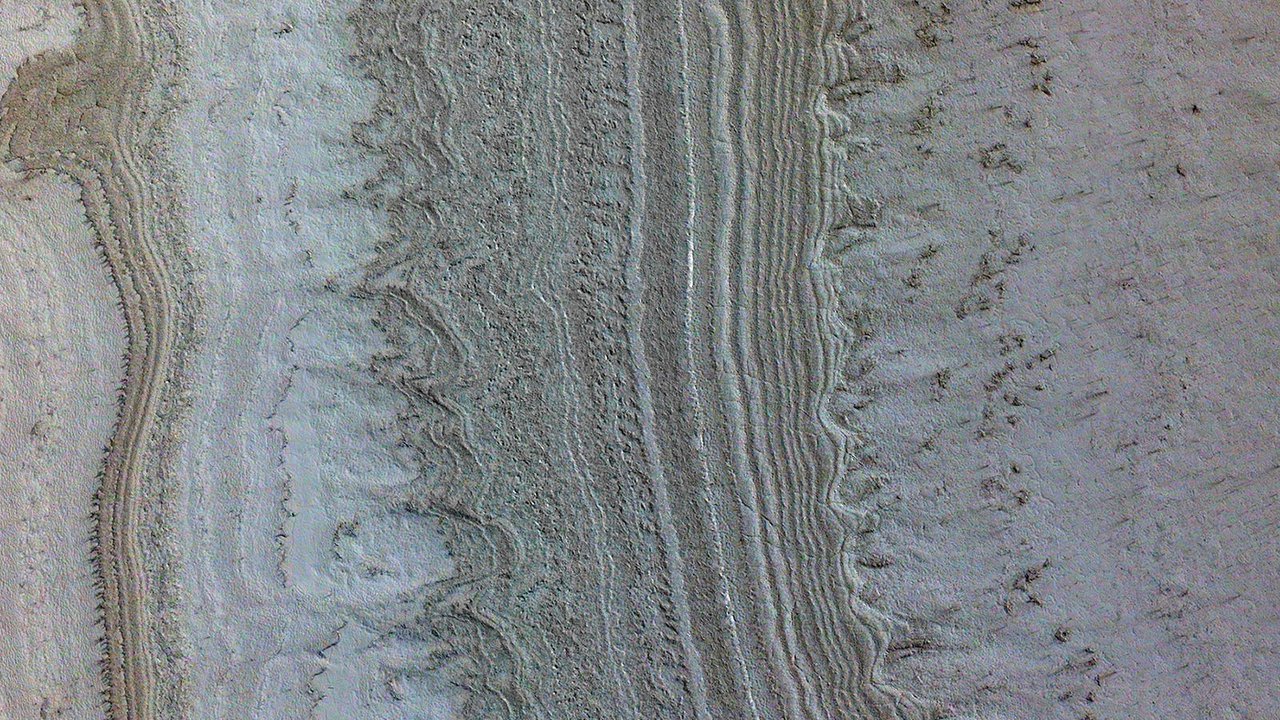
Now, a new paper in Geophysical Research Letters, which is apparently having a banner week for newsworthy publications, provides multiple lines of evidence that show the mineral under the ice is a specific type of clay called smectite. The lead author on this paper is PSI’s own Isaac Smith. Not only did the team use experimental work and some modeling to demonstrate their hypothesis, but they also found evidence of smectites around the edges of that polar ice cap.
Let’s revisit the history of this ongoing controversy. Back in 2018, radar observations were made using the MARSIS instrument on board Mars Express, and scientists found a bright reflection coming from underneath the south polar ice cap. The hypothesis at the time was that liquid water was causing the reflection, and the scientific community ramped up the excitement because who doesn’t want to find liquid water on Mars?
So another group worked on trying to figure out if there could be enough heat under the polar ice caps to even keep water in a liquid state. They found even more bright radar reflections in the Mars Express data, but a lot of the areas were definitely too cold for liquid water. It was hypothesized that maybe there was recent volcanic activity under the surface that kept the water from freezing, but this paper calculated that the energy needed was at least double the martian geothermal heat flow.
Then came Putzig’s paper in June, which poked holes in the liquid water theory and presented alternatives such as salty ice or other conductive minerals, both of which could have caused the bright reflection. Neither paper gave any definitive answer, leaving water still on the table as a possibility. Honestly, it’s going to be difficult to prove anyone correct without actually going to Mars and digging through the thick ice.
Enter Smith and his work, which employed a variety of techniques in its analysis. As Smith explains: Our study combined theoretical modeling with laboratory measurements and remote sensing observations from The Compact Reconnaissance Imaging Spectrometer for Mars (CRISM) instrument on NASA’s Mars Reconnaissance Orbiter. All three agreed that smectites can make the reflections and that smectites are present at the south pole of Mars. It’s the trifecta: measure the material properties, show that the material properties can explain the observation, and demonstrate that the materials are present at the site of the observation.
Smith goes on to put clays on Mars in perspective: Smectites are a type of clay that is extremely abundant on Mars, covering nearly 50% of the surface, especially focused in the southern hemisphere. I call them solid-state to reinforce the idea that these materials are solid. There is no unbound water. Further, our experiments show that when the clays are frozen to cryogenic temperatures, they become brittle, rather than a soft clay like you might use for pottery. Recent theoretical work had suggested that clays could make bright reflections, but no one had frozen them to temperatures we would see on Mars – namely 40 to 50 degrees below freezing – and measured them, nor had they identified these minerals at the south pole.
Does this put the entire question to rest? Possibly. It surely makes the liquid water hypothesis difficult to support. Personally, I think we’re done here, but who knows what next week’s press releases will bring?

Rounding out my exoplanet week, I have, in my humble opinion, saved the best for last. This last story from Eos’ exoplanet issue looks at some wild and weird planets, including zombies and my favorite, puffballs.
I spoke yesterday about planets that got a second chance of life, orbiting pulsars. These are also called zombie planets. It’s hard to believe a planet can exist in orbit around a pulsar, which is a rapidly spinning neutron star that emits huge pulses of energy on the regular. You can time a clock by these pulses. Add in a planet, which tugs on the star gravitationally, and that timing gets slightly altered. And then we know there’s a planet there.
Here’s what’s even wilder to me. The timing of pulsars is so precise that we could detect the gravitational tug of something as small as an asteroid. But we don’t. This means these zombie planets are rare. So why say they got a second chance? Well, pulsars come after a supernova of the star, and supernovae are pretty destructive. It’s unlikely a planet orbiting a star that went supernova could survive. These zombie planets may have formed from the leftover debris of the system or even from any destroyed companion stars, like a white dwarf. Once the star has gone supernova, all that debris forms a disk around the pulsar, and like any regular protoplanetary disk, planets form. And now we have zombie planets. At least they aren’t going for our brains, am I right?
Finally, I am going to end this week talking about cotton candy planets. I have a friend from university who researches these, and I’m so proud of the work she has done, so that’s perhaps why these are close to my heart. She’s mentioned in the Eos article, too!

You’ve heard of hot Jupiters — gas giant planets orbiting close in to their stars so that they’re super hot. Sometimes, the atmosphere around these planets can get puffed up from the heat. That’s not what’s happened with the super-puff planets, though. Those worlds are much, much cooler. Three such planets were found in orbit around Kepler-51, and the mechanism making them puff up must be something other than heat.
Maybe, since Kepler-51 is a fairly young star, the planets are still puffed up from the internal heat of their formation. Or they formed really quickly, grabbing tons of gas from the protoplanetary disk. It’s even possible that they may not be all that puffy, which would be a disappointment to me, but could be the result of high hazy layers or wide bands of rings making the planets appear larger than they actually are.
What makes Kepler-51’s super-puffs even more unusual is that they are close to their star while most other known super-puffs are the most distant planets in their systems. That would mean these planets have to form far out and migrate inward. Or maybe they just have to end up far enough away to hold on to their massive atmospheres. Or some combination. As my friend Jessica Libby-Roberts said: There is still a lot to be done in this area.
I look forward to finding out where this research goes in the coming years.
Until then, this has been the Daily Space.
Learn More
Bushfires Impact Global Climate in 2020 More Than Lockdown
- AGU press release
- “Coupled Climate Responses to Recent Australian Wildfire and COVID-19 Emissions Anomalies Estimated in CESM2,” J. T. Fasullo et al., 2021 July 27, Geophysical Research Letters
Listening to Volcanic Vortex Rings to Understand Eruptions
- AGU press release
- “Volcanic Vortex Rings: Axial Dynamics, Acoustic Features, and Their Link to Vent Diameter and Supersonic Jet Flow,” J. Taddeucci et al., 2021 July 28, Geophysical Research Letters
Lab-Created Hydrohematite May Solve Mystery of Mars Blueberries
- Penn State press release
Russia Plays Pinball With ISS and Scores TILT
Mars South Polar “Lakes” Are Actually Clay
- NASA JPL press release
- York University press release
- “A Solid Interpretation of Bright Radar Reflectors Under the Mars South Polar Ice,” I. B. Smith et al., 2021 July 15, Geophysical Research Letters
Oddball Exoplanets: Zombies, Hot Jupiters, and Super-Puffs
Credits
Written by Beth Johnson and Erik Madaus
Hosted by Beth Johnson
Audio and Video Editing by Ally Pelphrey
Content Editing by Beth Johnson
Intro and Outro music by Kevin MacLeod, https://incompetech.com/music/


 We record most shows live, on Twitch. Follow us today to get alerts when we go live.
We record most shows live, on Twitch. Follow us today to get alerts when we go live.